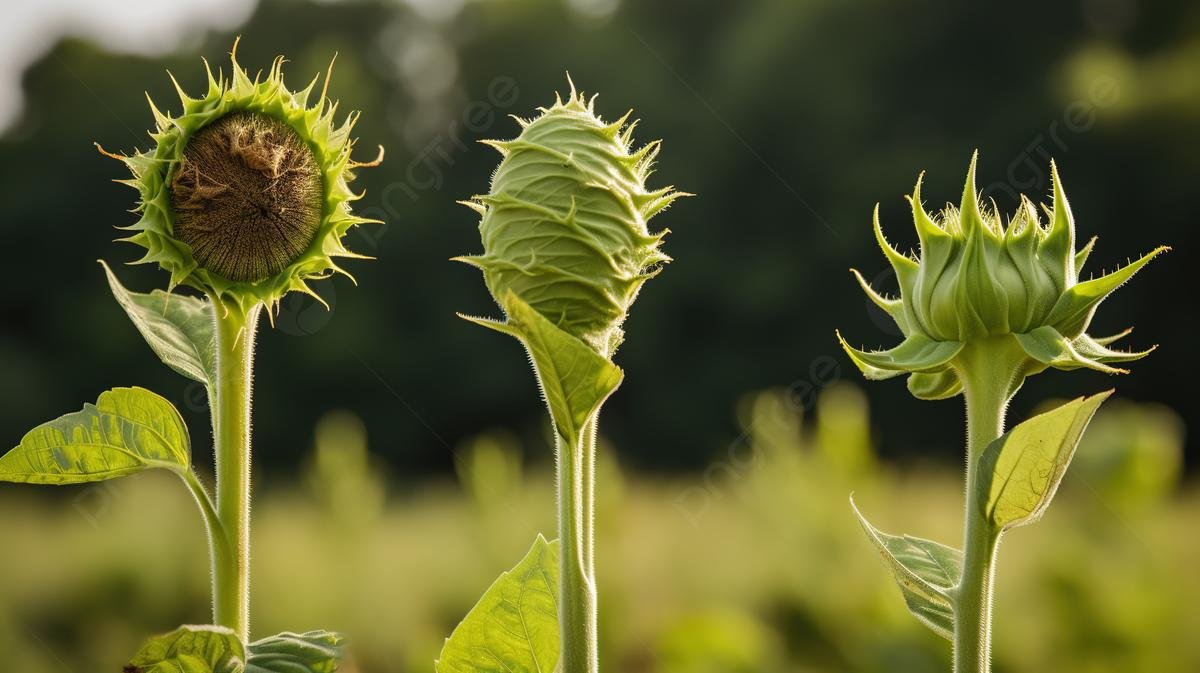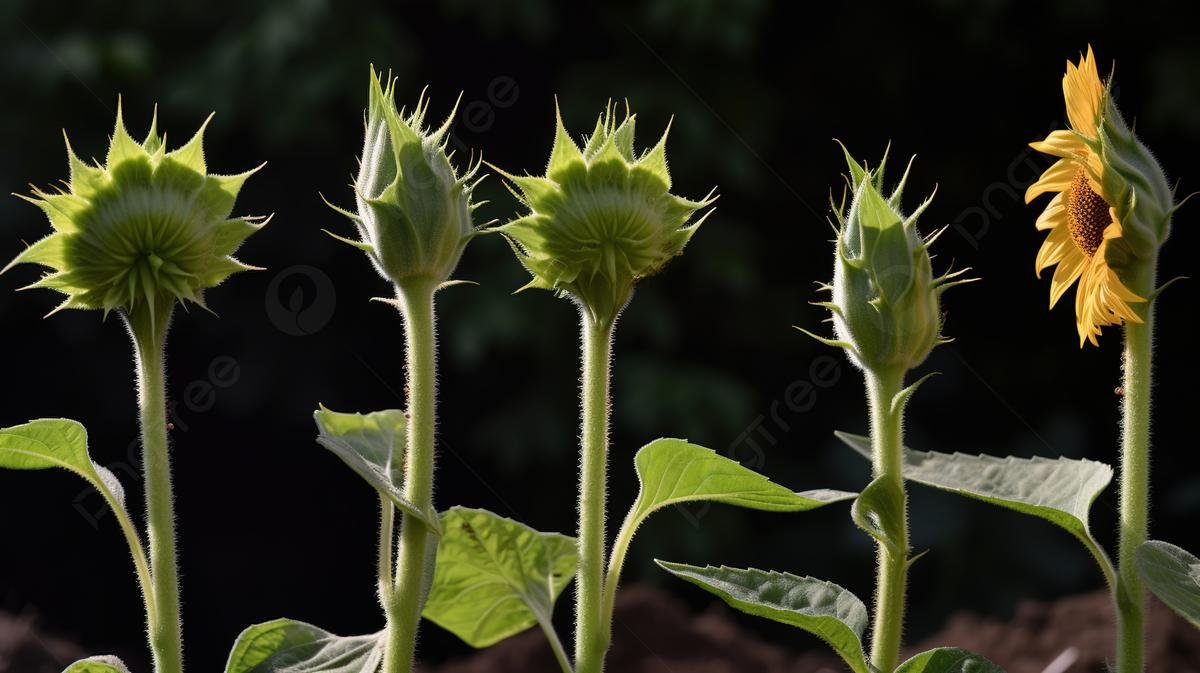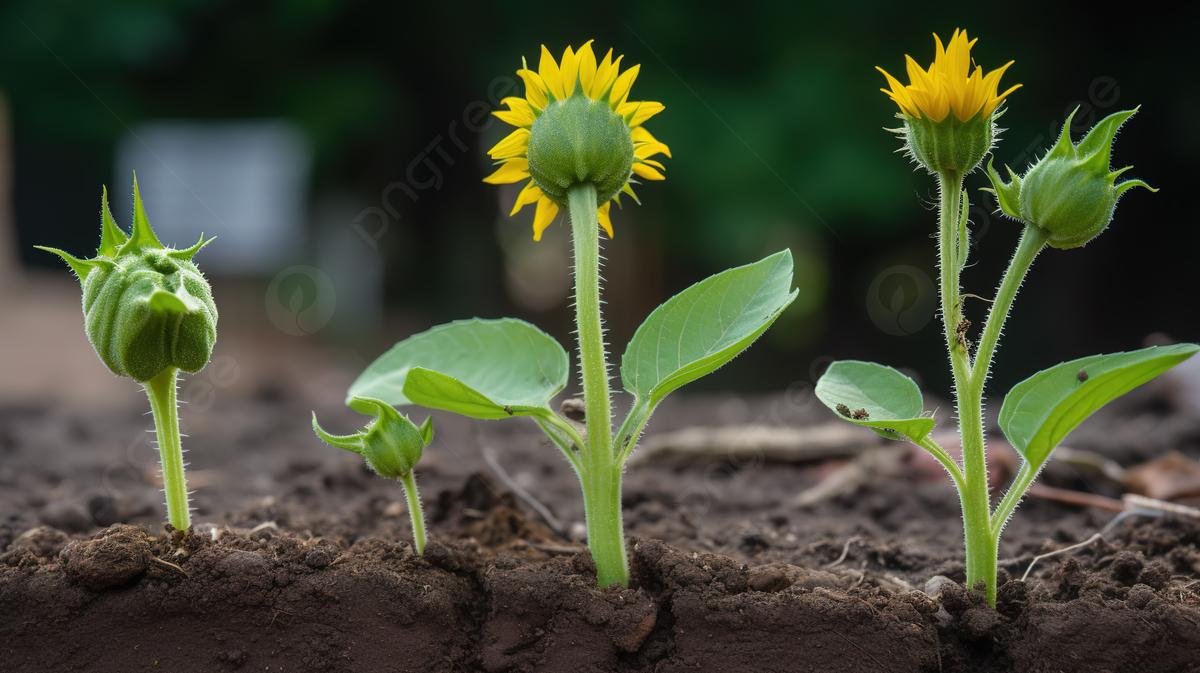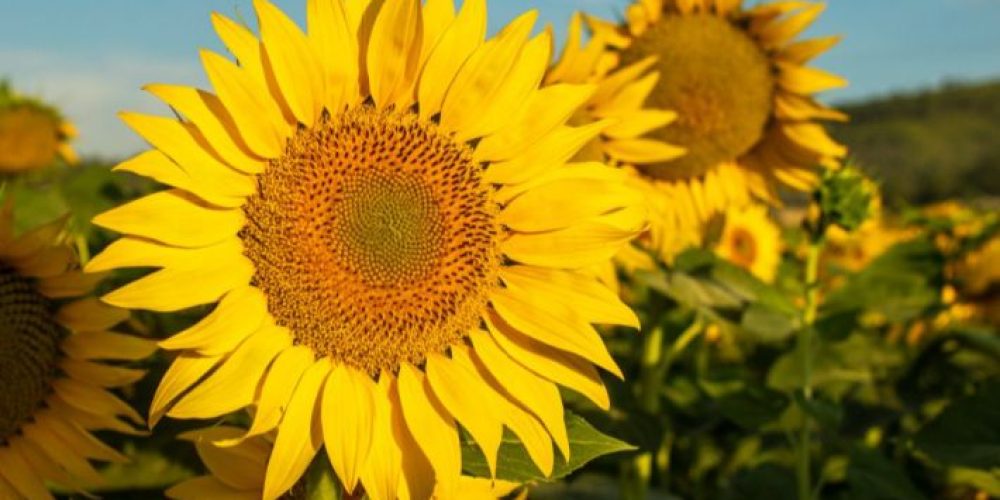Table of contents of the article
ToggleThe sun worship flower, with its dazzling beauty and unique movement towards the sun, is one of the most magical flowers in nature; In this article, we at the World of Plants website, WORLD OF PLANTS, have defined the sunflower flower, then determined its original habitat, then explained the methods of growing the sunflower flower, how to care for it, and many other matters related to the sunflower flower that the dear reader of our website is interested in.
Introduction to sunflower
The sunflower, known by its scientific name (Helianthus annuus), belongs to the plant kingdom and belongs to the Asteraceae family. It is a member of the Asteraceae order and a seed-covered phylum.
The original home of the sunflower
The Americas are the original home of the sunflower plant, and depending on its location, it needs high temperatures and a dry climate to grow successfully.
Morphological characteristics of sunflower
The sunflower plant has a large flower, with a large, almost black center. It consists of thousands of small flowers that later turn into seeds arranged in a spiral. They have bright yellow petals. They have large, rough leaves. The plant grows to a height ranging from 1.5 to 3.5 meters. meter.


The right environment for sunflowers
The following is a set of things that must be available in the planting area:
First: the bowl or pot
The appropriate size of the plant pot depends on its type; That is, dwarf sunflowers need a pot with a capacity of 1 or 2 gallons, while large sunflowers need a pot with a capacity of at least 5 gallons.
The sunflower growing medium consists of a mixture of soil and compost, about 2.5 cm below the top edge of the pot.
The pot should have a bottom layer of gravel for aeration and drainage.
First: the bowl or pot
Here are some points regarding lighting and ventilation for sunflowers:
Sunflowers need a lot of sunlight, meaning they should be exposed to the sun for 6 to 8 hours a day. It grows optimally in direct sunlight during long, hot summers.
In nature, worms and insects aerate the soil, so the air reaches the roots of the plant, and drainage channels for water are formed, thus distributing moisture evenly in the soil. However, when planting in containers, the soil must be aerated using sticks to create channels in it, and this is usually before watering.
Third: Temperature
The sunflower thrives best in a warm climate, and it is also known to tolerate high temperatures, but the ideal temperature for flower growth ranges between 21-26 degrees Celsius, provided that the soil temperature when planting the seeds is at least between 13-16 degrees Celsius. Celsius.
Watering and feeding sunflowers
Watering for sunflowers
Here are some points related to watering sunflowers:
When watering newly planted seeds, it is preferable to use a watering can or a sprinkler, so as not to remove the soil cover from above the seed, and so as not to move the seeds from the places where they were planted.
Whether the plant is planted in your garden or in a container, make sure there is good drainage to keep the flower's roots from rotting.
You must continue to water the seeds and seedlings daily during the germination period, in order to keep them from drying out.
Once the flower reaches maturity, water it with plenty of water intermittently to encourage root growth deep into the soil. If the weather is neither too dry nor too wet, water it once a week with several gallons of water.
Use a 5-7cm layer of organic mulch over the soil to protect it from drying out through evaporation, and to reduce weed growth around it.
When watering the young plant, spray water around the root area, at a distance of 7-10 cm
Nutrition and fertilization of sunflowers
Here are some points about feeding and fertilizing sunflowers:
- Make sure to use fertilizer on soil that is poor in minerals and nutrients. The more nutrients the plant receives, the larger its flowers will be.
- Do not overuse fertilizer with a high percentage of nitrogen, as it delays the flowering process.
- Make sure to use fertilizer sparingly, because overusing it will cause the flower stem to fall off in the fall.
- Add diluted fertilizer to the irrigation water, and avoid placing it directly at the base of the plant. Because this may cause stem rot.
- A trench can be built in a circle around the plant, 45 cm from the base, and diluted fertilizer can be added weekly.
- Sunflowers grow vibrantly and energetically, growing up to two meters in length in 3 months, so it is wise to use slow-reacting granular fertilizers.
- Stop using fertilizer when the flower matures, in order to stimulate the growth of buds and flowers. If you continue using fertilizer, the flower will focus its energy on growing leaves, which will hinder the growth of buds and the flowering process.
Other aspects of sunflower care
First: Trimming sunflowers
Here are some points about pruning sunflowers:
- Make sure to sterilize your pruning tools, including gardening shears, before using them on your flower so you don't transfer diseases, fungal infections, or mold from one plant to another.
- Get rid of the dead or wilted parts first. For example, if you find some leaves that have withered and turned brown, pick them. You can stop there if you want to give your plant a wild character.
- You can trim a large group of flowers to give them an elegant shape to look like a fence.
- Water the flowers with plenty of water immediately after you finish pruning, to relieve them of the stress caused by pruning, and so that they grow back stronger.
Second: Harvesting sunflowers
- If you want to harvest sunflowers to use later as a snack, or to feed the birds, do the following:
- When a sunflower begins to dry out and its face is facing the ground rather than the sun, check if the seeds are swollen and ripe, and cut the flower along with a portion of the stem about 60 cm long.
- Cover the flower with muslin or a burlap bag, and hang it in the garage or garden shed until it dries completely.
Other sunflower care tips
Below are some tips for caring for sunflowers:
- It is possible to use snail poison around the stem of the plant to protect it.
- Use bamboo sticks to support long-stemmed sunflowers.
- Be sure to check your flowers and apply fungicides early if you notice any signs of them.
- Plants infected with fungi can be eliminated by removing them so that they do not transmit the infection to healthy flowers.
- Keep your garden clean from the growth of weeds, as they are one of the factors that infect flowers with fungi.
- Sunflowers do not attract many insects, but gray moths lay their eggs in the flowers.
- If the moth infects the entire crop, you can spray the flowers with entomopathogenic bacteria (Bacillus thuringiensis). Once the larvae hatch, they will feed on the bacteria and die.
- Water the plant whenever the soil dries to a depth of 5 cm.
- If you have squirrels that like to eat your seeds, you can mix some ground cayenne pepper into the soil around the plant to keep them away.
- If birds try to steal the seeds before they grow, place a net over the field until they grow into seedlings.
The sunflower plant is considered one of the most important oil plants in our country and ranks first in terms of oil consumption. Türkiye meets 50% of crude vegetable oil from sunflower. Since the oil plant does not meet the production needs in Türkiye, it is imported from abroad to cover this gap. For this reason, the Ministry of Agriculture included sunflowers among the subsidized plants, as subsidy premiums are paid to sunflower producers based on weight.
Although the majority of sunflower growing areas are spread in the Thrace region, the Konya region has shown a significant increase in this area, especially in recent years. The Konya region has important advantages in terms of sunflower cultivation, both for oil purposes and for seed production. In 2011, there was a state subsidy of 23 piasters per kilogram of oilseed sunflowers.
Climatic requirements for sunflowers
Sunflowers can be grown in areas that receive 700-800 mm of rainfall annually or 350-400 mm per growing season. But since the rainfall in the Konya region does not exceed 100-150 mm, it must be planted irrigated. In order for sunflower seeds to germinate, the soil temperature must be 8-10 degrees. It is negatively affected by temperatures below this. The sunflower plant, during the period of growth of the first two leaves, is able to withstand low temperatures of up to -5 degrees below zero. The plant's resistance to low temperature gradually decreases until it reaches 6-8 leaves. Its adaptability is high compared to many plants. Growing sunflowers requires an optimum temperature of 21-24 degrees during the day.

Preparing the soil for sunflowers
The purpose of soil treatment in sunflower cultivation is to ensure plant residues are mixed into the soil, eliminate weeds, prepare a suitable foundation for seeds, and provide moisture, aeration and temperature for germination and growth. For this purpose, the field that will be planted with sunflowers is plowed to a depth of 20-25 cm at an appropriate time, as the field can be plowed in the fall after removing the previous crop. Sunflowers need a moist foundation in order to germinate properly. To achieve this, when the soil is ready in the spring, it is plowed using a cultivator to a depth of 10-15 cm and prepared for planting.
In conclusion, we would like to note that we, at the world of plants website, offer you all the necessary services in the world of plants, we provide all farmers and those interested in plants with three main services::-
- Artificial intelligence consulting service to help you identify diseases that affect plants and how to deal with them.
- Blog about plants, plant diseases and care of various crops ... You are currently browsing one of her articles right now.
- An application that provides agricultural consultations to clients, as well as a service for imaging diseases and knowing their treatment for free – Click to download the Android version from Google Play Store، Click to download the IOS version from the Apple App Store.
References
Sunflower cultivation - konyaseker website
How do I take care of a sunflower? - planting.mawdoo3




